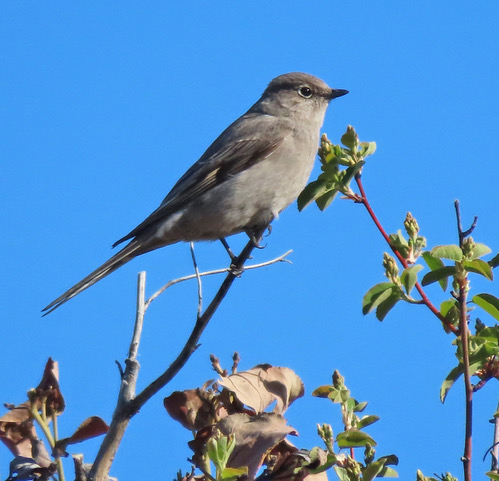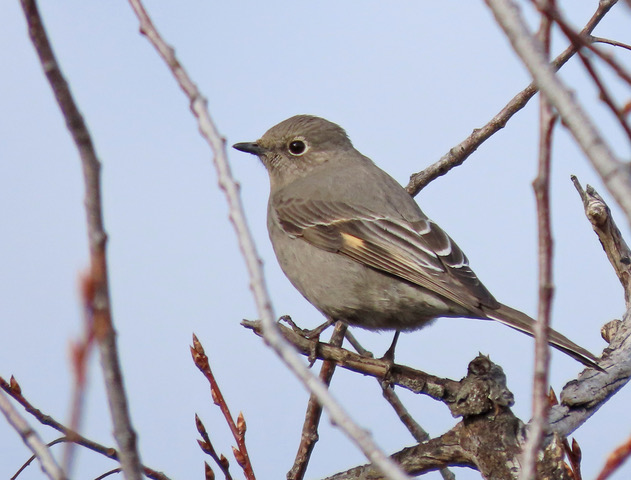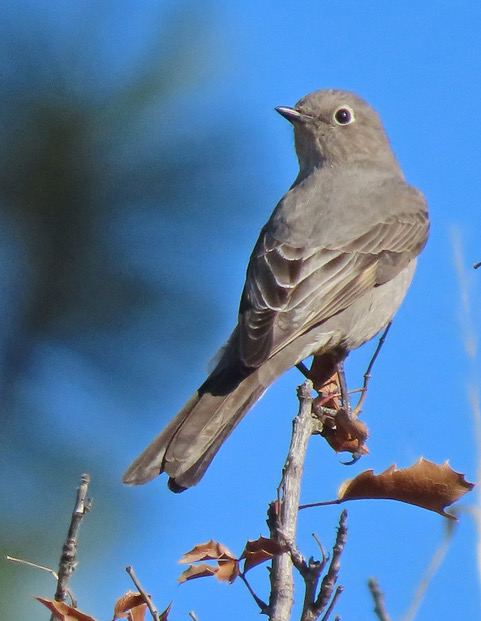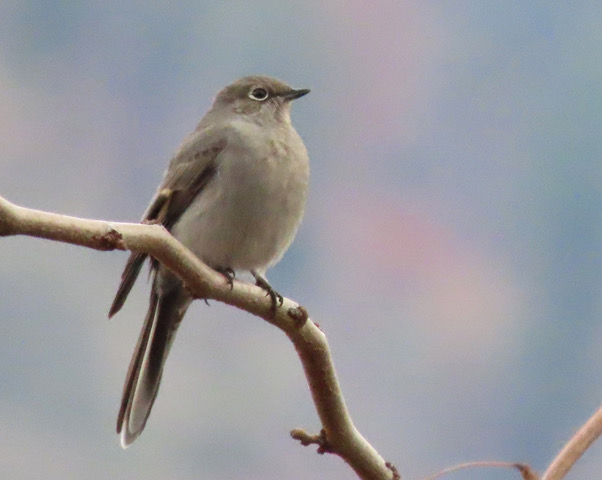Not all birds are colourful and dramatic in plumage, but I find the quiet elegance of some of these beautiful nonetheless. Today’s species, the Townsend’s Solitaire, is such a bird.
Slim and grey, these birds are related to robins, bluebirds and thrushes. They are 8–8.5”/20-22cm in size with a wingspan of 13–14.5”/33-37cm. A large black eye contrasts with a complete white eye ring. The beak is short and black and there are pale buffy wing bars mostly visible when they fly. The tail is long, tapered when closed, and with white outer feathers. Their plumage does not change so they are easily recognizable at any time of year. They sit noticeably upright when they perch, are usually solitary (hence the name) and somewhat shy.

They are year-round residents of the Okanagan, nesting in conifer forests at upper elevations, but often coming down lower in the cooler months. Their range covers most of western North America, though they do retreat from the Prairies during the colder part of the year.
Their nests are cups of pine needles, dry grasses and weed stems and surprisingly they nest on the ground or under an overhanging lip of a bank or cutting. They typically lay 4 eggs and raise one brood between May and August. Food consists of a wide variety of insects and spiders during breeding season. They like to perch high on a branch or guy wire of a power pole, then dart out to snap their beaks on passing flying insects, which is quite fun to watch. When breeding is over they love juniper berries so a good place to look for them is the top of Rocky Mountain Juniper trees, never very big trees, which are often dotted across our grassland slopes. I have seen family groups of Townsend’s Solitaires from the KVR rail trail in late summer, and Myra Bellevue is also a favourite hangout

Townsend’s Solitaires sing all year round, and especially when establishing breeding territories. The main song is robin-like, full of rolling and trilling notes, interspersed with squeakier notes and with little discernible pattern but very pleasing to hear. Their call notes are single, high-pitched and repeated, not unlike those of a Northern Pygmy Owl.
When fall comes and so many of our colourful breeding species depart for warmer climes to the south, it’s comforting to know that there are a few attractive all-year residents who will keep us company throughout the fall and winter. And even more obligingly, they move down closer to where we live so that we have more chances of seeing them. Keep your eyes open as you hike, walk, bike or drive around this fall, and listen too. You might be rewarded by the sight of a quiet, slim grey bird looking quizzically back at you.

Pam Laing
Okanagan birder

